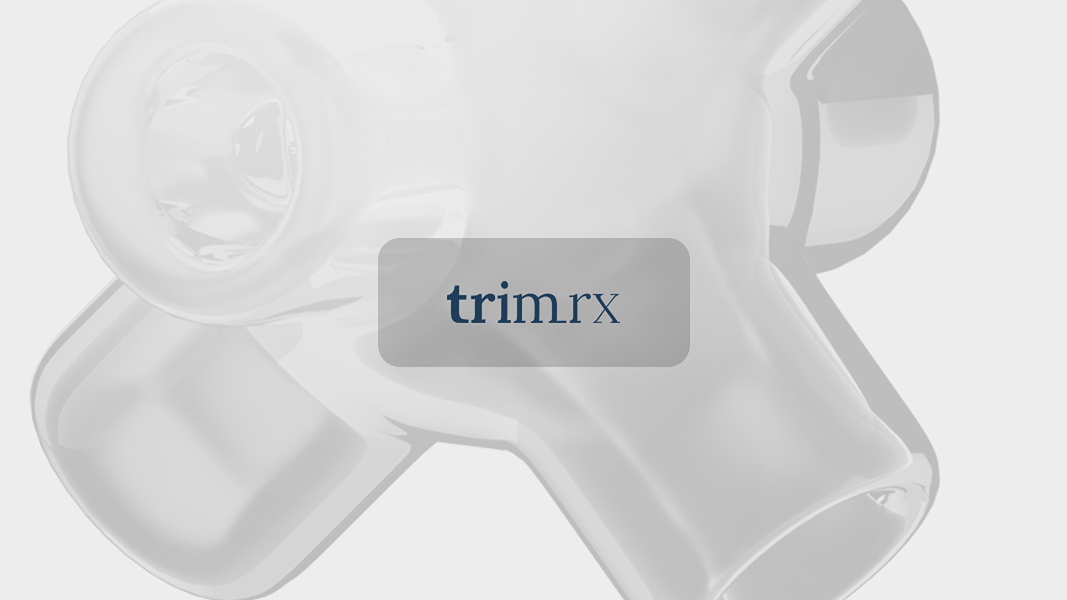Understanding Why You Should Change Injection Sites for Tirzepatide

Introduction
When embarking on a weight loss journey, especially with the help of medications like tirzepatide, it’s essential to understand all aspects of the treatment process. One often-overlooked detail is the importance of rotating injection sites. This practice plays a crucial role in maximizing the medication’s effectiveness and minimizing potential side effects. Together, we will explore the reasons behind changing injection sites for tirzepatide and provide you with comprehensive insights to enhance your experience with this weight loss solution.
Have you ever wondered why healthcare professionals emphasize rotating injection sites when administering medications like tirzepatide? The answer isn’t just a matter of preference; it is grounded in medical science and patient care. Tirzepatide, a GLP-1 receptor agonist, has gained significant attention for its role in managing weight and improving metabolic health. However, just like any other medication that requires self-administration via injection, the technique you use can significantly impact the results.
In this blog post, we will delve into the mechanics of tirzepatide, the rationale behind changing injection sites, and the best practices for administering this medication. By the end of our discussion, you will have a deeper understanding of how proper injection techniques can enhance your treatment experience and outcomes.
What This Post Will Cover
As we navigate through the intricacies of tirzepatide injections, we will explore:
- An overview of tirzepatide and its intended use.
- The science behind injection site rotation.
- Best practices for self-administering tirzepatide.
- The potential consequences of not rotating injection sites.
- Tips for successfully managing your injection routine.
By focusing on these areas, we aim to provide you with a thorough understanding of why changing injection sites for tirzepatide is not just a guideline but a vital component of your weight loss journey.
Understanding Tirzepatide
What is Tirzepatide?
Tirzepatide is a groundbreaking medication designed to assist individuals in managing weight and controlling blood sugar levels. As a dual GIP and GLP-1 receptor agonist, it works by mimicking the body’s natural hormones that regulate appetite and insulin secretion. When combined with a healthy diet and exercise regimen, tirzepatide has demonstrated promising results in promoting weight loss and improving metabolic health.
The medication is administered via injection, typically once a week, allowing for a consistent therapeutic effect. As we explore its administration, it is crucial to focus on the technique employed, including the importance of rotating injection sites.
How Does Tirzepatide Work?
Tirzepatide operates through several mechanisms:
- Appetite Regulation: By mimicking GIP and GLP-1 hormones, it helps signal feelings of fullness, reducing the desire to overeat.
- Slowed Gastric Emptying: The medication slows down digestion, which can lead to prolonged satiety after meals.
- Enhanced Insulin Sensitivity: Tirzepatide helps the body utilize insulin more effectively, making it easier to manage blood sugar levels.
These attributes make tirzepatide an effective tool for weight management, but they also underscore the need for proper administration techniques to ensure optimal results.
The Importance of Changing Injection Sites
Why Rotate Injection Sites?
-
Avoiding Scar Tissue Buildup: Repeatedly injecting the same area can lead to scar tissue formation. Scar tissue may alter the absorption of the medication, reducing its effectiveness. By rotating sites, we minimize this risk and ensure that the medication is absorbed efficiently.
-
Reducing Injection Site Reactions: Frequent injections in the same location can cause irritation, redness, or swelling. By varying injection sites, we decrease the likelihood of these adverse reactions, making the process more comfortable and less painful.
-
Consistent Absorption: Different areas of the body can absorb medications at varying rates. By rotating sites, we optimize the absorption characteristics of tirzepatide, ensuring that the medication works as intended.
-
Psychological Comfort: Changing injection sites can alleviate the mental burden of self-injection. It allows individuals to feel more at ease with the process, fostering a positive mindset towards treatment adherence.
Best Practices for Rotating Injection Sites
To effectively rotate injection sites while administering tirzepatide, we suggest the following:
- Identify Multiple Injection Areas: The recommended areas for injection include the abdomen, thighs, and upper arms. Each of these areas has different absorption rates, making them ideal for rotation.
- Create a Systematic Approach: Establish a rotation schedule or pattern that ensures each site is used evenly. For example, if you inject in the abdomen one week, consider switching to the thigh for the following week.
- Keep a Record: Maintaining a log of injection sites can help you track which areas have been used recently, preventing the risk of overusing a particular site.
Consequences of Not Changing Injection Sites
Neglecting to rotate injection sites can lead to several issues:
-
Decreased Medication Efficacy: As previously mentioned, scar tissue can interfere with medication absorption. This can lead to inconsistent blood levels of tirzepatide, diminishing its effectiveness in weight management.
-
Injection Site Reactions: Skin irritation, bruising, and swelling are common when injections are repeatedly administered in the same area. This discomfort can deter individuals from adhering to their medication schedule.
-
Psychological Barriers: The fear of pain or discomfort associated with injections can increase anxiety, making it more challenging for individuals to maintain their treatment regimen.
-
Increased Risk of Infections: Repeatedly injecting in the same area can increase the risk of infection, particularly if proper hygiene practices are not observed.
Tips for Successful Self-Administration of Tirzepatide
Preparing for Your Injection
-
Gather Your Supplies: Ensure that you have all necessary materials—tirzepatide pen, alcohol swabs, and sharps container—ready before starting your injection.
-
Clean the Injection Site: Use an alcohol swab to clean the chosen injection area thoroughly. This reduces the risk of infections and promotes a safe injection experience.
-
Choose Your Injection Technique: Depending on the area, you might need to pinch the skin to create a fold. This can help ensure the medication is delivered into the fatty tissue beneath the skin.
Administering the Injection
-
Follow the Instructions: Carefully follow the instructions provided with your tirzepatide pen. This will help ensure that you are administering the medication correctly and safely.
-
Inject at a 90-Degree Angle: Insert the needle at a 90-degree angle to the skin for optimal delivery into the fatty tissue.
-
Inject Slowly: Press the plunger down slowly and steadily. This can help reduce discomfort and ensure that the medication is dispensed properly.
-
Dispose of Used Needles Safely: After completing your injection, place the used needle in a sharps container immediately. Never dispose of needles in regular trash to prevent injury and contamination.
Post-Injection Care
-
Monitor for Reactions: After the injection, keep an eye on the injection site for any adverse reactions such as redness, swelling, or unusual pain. If you notice any concerning symptoms, consult your healthcare provider.
-
Keep Track of Your Schedule: Stick to your injection schedule and make a note of the sites used. This will help you maintain a consistent routine and ensure that you are rotating sites as recommended.
Conclusion
Proper administration of tirzepatide, including the practice of rotating injection sites, is essential for maximizing the medication’s effectiveness and minimizing potential side effects. By understanding the importance of changing injection sites, we can enhance the overall experience of using this innovative weight loss solution.
At TrimRx, we are committed to empowering our clients on their weight loss journeys through personalized, medically supervised programs. If you’re considering tirzepatide or are currently using it, we encourage you to take our free assessment quiz to see if you qualify for our personalized weight loss medications. Together, we can navigate this journey towards a healthier lifestyle.
FAQ
How often should I change my injection site for tirzepatide?
It’s advisable to rotate your injection sites with every weekly injection to prevent scar tissue buildup and ensure optimal absorption.
What areas can I use for my injections?
The recommended sites include the abdomen, thighs, and upper arms. Each area offers different absorption rates, so rotating among them is beneficial.
What should I do if I experience irritation at the injection site?
If you notice redness, swelling, or pain at the injection site, consider switching to a different area for your next injection and consult your healthcare provider if symptoms persist.
Can I use tirzepatide with other medications?
Always inform your healthcare provider about any other medications or supplements you are using. They can provide guidance on potential interactions.
How can I ensure I correctly administer the injection?
Follow the instructions provided with your tirzepatide pen, and consider seeking guidance from your healthcare provider to ensure proper technique and comfort.
By embracing best practices in injection administration, we can work together to make your weight loss journey with tirzepatide smoother and more successful.

Transforming Lives, One Step at a Time
Keep reading
Who Can Take Tirzepatide? Eligibility for a Healthier Future
Discover who can take Tirzepatide (Mounjaro®, Zepbound®) for Type 2 Diabetes or weight loss. Learn about eligibility, how it works, and safety. Start your journey!
Tirzepatide Eligibility: Can Anyone Take Tirzepatide for Weight Management?
Curious about Tirzepatide eligibility for weight loss? Learn who can take it, its benefits, side effects, and if it’s right for you. Get answers today!
Optimizing Your Wellness Journey: What Vitamins Should I Take with Tirzepatide?
Taking Tirzepatide for weight loss? Discover which vitamins and supplements can support your health, energy, and nutrient needs. Learn more!
Combining Tirzepatide and Metformin for Enhanced Weight Management
Discover if you can take tirzepatide with metformin for enhanced weight management & blood sugar control. Learn benefits, risks, and how TrimRx can help.
Is It Better to Take Tirzepatide on an Empty Stomach? Navigating Your Weight Loss Journey with Confidence
Wondering if you should take tirzepatide on an empty stomach? Get the definitive answer and optimize your injection schedule for effective weight loss. Learn more!
Optimal Tirzepatide Dosing: How Much Tirzepatide Should You Take?
Discover the optimal Tirzepatide dosing for effective and safe weight loss. Learn about starting doses, titration, and personalized plans to achieve your health goals.
When to Take Tirzepatide: Finding Your Ideal Dosing Schedule
Optimize your Tirzepatide treatment for weight loss. Learn when to take Tirzepatide—morning or night—to manage side effects & maximize benefits. Get personalized guidance!
Understanding Tirzepatide: How Long Before It Takes Effect?
Curious how long before tirzepatide takes effect for weight loss? Discover the timeline, from initial responses to lasting results, & what to expect on your journey.
Navigating Your Tirzepatide Journey: What Time is Best to Take Tirzepatide?
Discover the best time to take Tirzepatide for optimal weight loss and blood sugar control. Learn about flexible dosing & consistency for max efficacy.






